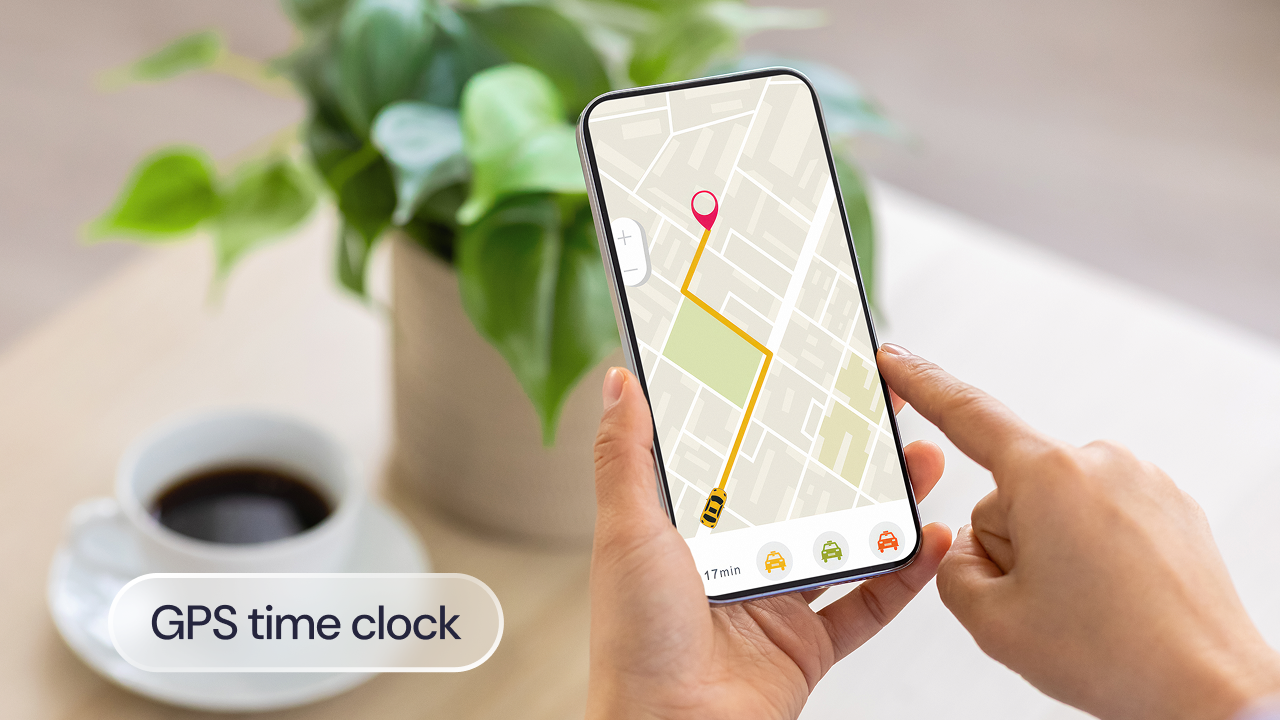Developing effective time management skills can often be a big challenge for employees. They may start off with the best of intentions, but they can easily get overwhelmed by the demands of their work, distractions, and a lack of effective tools and strategies. One technique that has gained significant popularity in this area is timeboxing.
But what exactly is timeboxing, and does it really work?
In today’s article, we will explore the concept of timeboxing and explain how you and your team can use it as a productivity tool. We will also discuss the benefits of using technology together with a timebox template to maximize the productivity of your workforce.
- What is timeboxing?
- Does timeboxing work?
- How to timebox
- How to create a timeboxing template
- The best timeboxing app
- Paperless (and painless) time management
- Manage your team’s time without losing yours
What is timeboxing?
Timeboxing is an agile project management technique that involves allocating fixed time periods, or “boxes,” to specific tasks or activities. It is a structured approach that helps employees effectively manage their time and accomplish their goals within set time limits.
Although similar to time blocking where you schedule specific blocks of time for different tasks, with timeboxing, you also assign specific time limits or deadlines, allowing individuals to focus on completing their tasks within an allotted time frame. This method enhances productivity by creating a sense of urgency and preventing employees from spending too much time on a single task. By breaking projects into smaller, manageable units in this way, timeboxing encourages prioritization and prevents procrastination.
Timeboxing also facilitates better planning and decision-making. Employees have to estimate how long they think each task will take and allocate their time and resources accordingly. As a result, they can develop their time management skills and determine whether they are staying on track and meeting their targets.
Ultimately, timeboxing improves efficiency, aids in task completion, and encourages disciplined work habits by instilling a sense of structure and accountability. It helps employees work within fixed time limits, be more productive, and achieve a sense of accomplishment.
Does timeboxing work?
Ok, so we’ve explored the meaning of timeboxing, but does it really work?
In short, yes. Timeboxing is a widely recognized and effective technique for managing time and improving productivity. For example, in a recent survey on productivity where participants were asked to rank 100 productivity hacks in order of importance, timeboxing was ranked as the number one tool. Survey participants claimed that this technique helps them stay organized, reduces procrastination, promotes a sense of accomplishment, and, ultimately, helps them overcome common time management challenges and become more productive.
Here are a few specific reasons why timeboxing works so well:
- Improved focus: By setting specific time limits for tasks, timeboxing helps employees stay focused, reduce time wasters, and avoid distractions. It also encourages a sense of urgency, preventing employees from spending too much time on a single task and improving concentration.
- Enhanced productivity: Timeboxing encourages employees to prioritize their tasks. This prioritization and structure boosts productivity as employees work on important tasks within predefined time frames.
- Better planning and time management skills: With a timebox approach, employees have to estimate how long they will need for each task in their day. This helps them better plan their schedules. What’s more, by breaking down projects into smaller, manageable tasks, employees can divide their time more effectively, helping them improve their time management skills.
- Sense of achievement: Completing tasks within the allocated time frames provides a sense of accomplishment and progress. This motivates individuals to maintain the discipline of timeboxing and further boosts productivity.
- Adaptability and flexibility: While timeboxing provides structure, it is also flexible. Schedules can be adjusted and modified when needed. As a result, employees can maintain their focus and avoid time anxiety, even when work priorities change.
How to timebox
Let’s take a look now at what this time management technique involves so that you can train your employees to use it.
Above all, remember that timeboxing is a flexible tool, and each employee may need to adapt their schedules to suit their specific needs and working style. Encourage them to experiment with different time intervals, refine their estimates, and find a rhythm that works best for them. The goal is to achieve a balance between structure and flexibility that enhances their productivity and helps them accomplish their goals.
Define your goals and priorities
Defining your goals and priorities is the crucial first step in effective timeboxing. Start by clearly identifying what you want to achieve, whether it’s daily tasks or specific project milestones. Take time to understand the importance and urgency of each task. Consider the impact it will have on your overall goals and prioritize accordingly.
Ultimately, this step helps you gain clarity and focus on what truly matters, ensuring that your timeboxing efforts align with your desired outcomes. By setting clear goals and priorities, you can allocate your time and energy more effectively, maximizing your productivity and achieving meaningful results.
Break down tasks into smaller units
When faced with larger tasks or projects, it can be overwhelming to tackle them as a whole. By breaking them down into smaller, more manageable units, you gain a sense of progress and control.
Start by analyzing the task at hand and identifying its subtasks. This allows you to allocate specific time slots for each subtask. Breaking tasks into smaller units also helps you focus on one aspect at a time, reducing the chances of feeling overwhelmed and increasing your ability to concentrate on the task at hand. Additionally, smaller units of work are easier to estimate in terms of time required, allowing for more accurate planning and allocation of resources.
Estimate task durations
This step is all about assessing the amount of time required to complete each task or subtask. Take into account the complexity of the task, the resources available, and your own capabilities. Consider any potential roadblocks or dependencies that may affect the time needed.
By estimating task durations in this way, you gain a realistic understanding of how long each task will take to complete. This helps you allocate appropriate time slots within your timeboxing schedule, ensuring that you have sufficient time to accomplish each task.
Accurate estimations also prevent schedule overloading and allow for better planning and prioritization of activities. Regularly review and refine your estimations based on your actual progress and experiences to improve the accuracy of future timeboxing sessions.
Determine time intervals
The next step is establishing specific time intervals for your timeboxes. Common intervals include 30-minute, 1-hour, or even 15-minute increments. Consider the nature of your tasks and the level of focus they require. Shorter intervals may be suitable for more concentrated and intensive tasks. Longer intervals, in turn, can accommodate tasks that require extended periods of uninterrupted work.
By determining time intervals in this way, you establish a structure for your timeboxes, allowing you to allocate dedicated blocks of time to specific tasks. Finding the right balance between intervals that are neither too short nor too long is crucial for maintaining productivity and ensuring that tasks are completed within allocated time frames.
Allocate time slots
Once you’ve identified your tasks and determined their estimated durations, it’s time to assign specific time slots for each task within your timeboxing schedule.
It’s a good idea to create a visual representation for this, such as a calendar or using a timebox template, where each column represents a time interval, and each row represents a task. Carefully distribute the tasks across the available time slots, considering their priorities and dependencies. Ensure that the total time allocated for all tasks fits within your available working hours. This will give you a clear roadmap for your day, enabling you to stay organized, focused, and accountable.
Set clear timeboxing start and end times
Setting clear start and end times is a vital component of effective timeboxing. Once you have allocated specific time slots for each task, it is important to define precise start and end times for each session.
Clearly specifying the boundaries of each timeboxing session brings structure and discipline to your workflow. It also helps you transition smoothly from one task to another, maintaining a sense of focus and urgency. You can establish a rhythm and pace for your work, ensuring that you dedicate dedicated periods of time solely to the assigned task. This clarity enables better planning, prevents tasks from spilling over, and allows for efficient scheduling of subsequent activities.
Avoid overloading
It’s important to be mindful of your limitations and not allocate an excessive number of tasks within a limited time frame. Overloading can lead to stress, time anxiety, reduced productivity, and a lack of focus.
Consider your energy levels and the realistic amount of work you can accomplish within each time slot. Be realistic in setting your expectations and prioritize tasks based on their importance and urgency. By avoiding overloading, you can ensure a balanced workload, maintain a sense of control, and prevent burnout. Remember, it’s better to allocate fewer tasks and complete them effectively than to overload your schedule and struggle to meet deadlines.
Minimize distractions
Creating a conducive work environment that is free from unnecessary interruptions is essential for maintaining focus and maximizing productivity. Turn off notifications on your devices and put your phone on silent to minimize distractions. You should also close unnecessary tabs or applications on your computer to avoid the temptation to procrastinate.
Ultimately, minimizing distractions in this way helps you create a dedicated space for deep work and concentration. As a result, you can fully engage with the tasks at hand during your timeboxing sessions. This promotes better time management, enhances efficiency, and helps you accomplish more within your allocated time slots.
Stick to the timeboxing schedule
Once you have allocated specific time slots for each task, it’s important to stick to the defined schedule. Avoid the temptation to extend or shorten time slots unless absolutely necessary. Discipline and commitment are key to maintaining the integrity of your timeboxing approach.
It’s also a good idea to use a time clock to help you track the hours that you spend on each time box. That way, you can accurately measure your progress and ensure that you are staying within the designated time limits.
Evaluate and adjust
Regularly reviewing and assessing your timeboxing sessions allows you to identify what worked well and what you can improve. Evaluate the effectiveness of your time allocations. Consider factors such as task completion rates, productivity levels, and any challenges encountered. You can then use your observations to make necessary adjustments to optimize your timeboxing strategy. This may involve refining task estimations, modifying time intervals, or adapting your overall approach.
How to create a timeboxing template
A daily timeboxing template, also known as a timebox planner, is a structured document or tool that helps individuals or teams allocate specific timeboxes to tasks or activities. It serves as a visual representation of the day’s planned schedule and helps employees prioritize their tasks and improve their time management skills.
The process for creating a timebox template is simple:
- Determine time intervals: Decide on the time intervals that work best for each employee. For example, you might choose 30-minute or 1-hour intervals, depending on the nature of an employee’s tasks and their personal preferences.
- Define task categories: Identify the categories included in a typical day. This could include work-related tasks, personal activities, meetings, breaks, or any other relevant categories.
- Allocate time slots: Assign specific time slots to each task category. Consider the estimated time required for each one and allocate time accordingly. Be realistic and allow for some flexibility to accommodate unexpected events or changes.
- Prioritize tasks: Within each time slot, prioritize the specific tasks or activities that need to be accomplished. List them in order of importance or urgency to ensure that the most critical tasks are completed within the established timeframe.
- Customize the template: Customize the template to suit the specific needs and preferences of each employee. You can add columns for task descriptions, notes, or any other relevant details that will help them stay organized and focused.
Once your timebox template is ready, you can either print it out and keep a physical copy or use a digital tool or timesheet software with features for creating and managing timeboxing templates. For example, Factorial’s project management features include a project tracker template and a time attendance template that you can use to track and manage employee working hours.
The best timeboxing app
A timeboxing app can also make it easier for your employees to stay organized, track their progress, and efficiently manage their time. This is because the technology has been specifically designed to streamline the timeboxing process.
Here are a few key features to look for before you invest in a solution:
- Task management. Make sure the app has robust task management capabilities so that your employees can easily create, organize and prioritize their tasks. Look for features like subtasks, due dates, and reminders.
- Time allocation. Look for a user-friendly interface that allows you to allocate specific time slots to tasks. The app should offer flexibility in setting time intervals, estimating durations, and adjusting allocations as needed.
- Timer and notifications. Make sure you pick a timebox app with an integrated electronic time clock. This will help your employees accurately track the time they spend working on each timebox. You should also look for a solution with customizable notifications and reminders to help them manage their time more effectively.
- Progress tracking. Look for visual indicators of task progress, such as progress bars or checklists. These features can help your employees stay motivated and track their productivity.
- Integration and syncing. Consider an app that integrates with other productivity tools or calendars. This will make it easier to sync tasks and deadlines across multiple devices and platforms.
- Reporting and analytics. Some advanced apps also offer reporting and analytics features, providing valuable insights into task completion rates, time allocation, and productivity trends. These features help your employees analyze and improve their time management habits.
- Collaboration. Finally, look for apps that support collaboration with shared task lists and real-time updates as this can facilitate effective teamwork and boost overall productivity in your business.
Paperless (and painless) time management
Factorial’s HRIS is an all-in-one solution for efficient time management, with a specific focus on employee time tracking and timeboxing. And, best of all you can do all this digitally. This means no more wasting time and effort on manual paperwork or painful administrative tasks.
For example, you can use Factorial’s clock-in system to accurately monitor and record employee hours. This gives you valuable insights into productivity, even if you hire remote employees. What’s more, Factorial’s HRIS allows you to easily create and manage time blocks for different tasks. Plus, the intuitive interface enables you to allocate specific durations to each time block. That way, you can ensure that your employees have a clear schedule and can effectively manage their time.
Factorial also offers seamless integration with popular calendar applications, such as Google Calendar. This means that your employees can sync their time blocks with their existing calendars. As a result, they will have a consolidated view of their schedules and can plan their activities accordingly.
Additionally, Factorial’s project management capabilities enable you to assign tasks, set deadlines, and track progress. That way, you can ensure that your employees stay on track, prioritize their work effectively, and meet important deadlines. Plus, thanks to Factorial’s task-sharing collaboration tools, real-time updates, and notifications, you can also be sure that everyone is aware of their assigned tasks and deadlines.
Finally, Factorial’s reporting and analytics features provide you with valuable insights into time allocation, task completion rates, and productivity trends. Data-driven analytics like these help you identify areas for improvement. They also help you optimize your time allocations, and, above all, refine your timeboxing strategies.
Ultimately, by combining the principles of timeboxing with tools like these, you can create a comprehensive system for efficient time management and build a cohesive and productive workforce.


